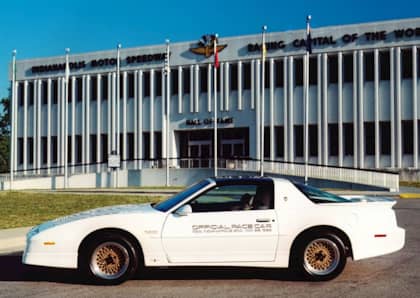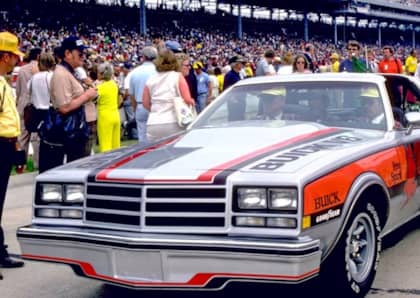History Of The Buick Riviera, Part 2: Turbocharging, Touchscreens, And Supercharging Lead The Way To The Future
By the end of the 1970s, the Buick Riveria's rear-wheel drive muscle car past was long behind it. Facing the same pressures that were transforming almost every large luxury machine in the industry, Buick decided to take the Riviera down a unique path that focused on providing buyers with the latest in advanced features and equipment, rather than simply sticking with the 'size matters' attitude that plagued a number of its competitors.

Along the way, it managed to evolve in terms of both technology and style, staying at the forefront of Buick's line-up and remaining relevant for the next two decades—right up until both it, and the Thunderbird that inspired it, rode off into the sunset. The Riviera's late-life trajectory was a final reminder that for almost half a century, Detroit's most innovative technologies initially hit the streets wrapped in a personal luxury coupe package.
Front-Wheel Drive Arrives, So Does Turbo Power
The 1979 Buick Riviera was the first front-wheel drive car built by the brand, but it was also the first time the flagship was offered with the choice of turbo power under the hood. Building on the Regal and LeSabre turbocharged options that had arrived for 1978, the Riviera's 3.8L turbo V6 was offered alongside a 5.7L V8 engine, where it developed up to 180 hp.

Compared to the emissions-choked V8 options of the era, this was a fairly impressive number, and it demonstrated Buick's willingness to go against the flow. Although the rest of the car finally shared its platform details with the Oldsmobile Toronado and Cadillac Eldorado it had split away from so many years beforehand, neither of those models could claim the same level of drivetrain sophistication.

This was the start of a new role for the Riviera that saw it shy away from its muscle machine roots and instead embrace high tech features and equipment that helped separate it from other Buick models. Over the next couple of years the Riviera would experiment with a short flirtation with a convertible body style, weather a disastrous dalliance with Oldsmobile's awful diesel V8, and crow about the introduction of the first dealer-installed cell phone in the industry. This generation of the Riviera—its sixth—was laying the groundwork for the car to evolve into a full-on futuristic showcase.
Early Digital Renaissance
That moment arrived when the coupe was redesigned for 1986. Although the convertible model had been banished, the new wedge-shaped Riviera was smaller and more lively behind the wheel.

The car filled its cockpit with all manner of digital displays, diving head-first into tomorrow with a touchscreen that controlled a number of vehicle functions perched on the center stack, one that featured a capacitative layer over a CRT display in place of the standard toggles and switches one would normally expect from that period.

This was paired with a digital dashboard that was seriously advanced for the mid-80s.

Buick continued to upgrade and refine its Graphic Control Center touchscreen display throughout much of the seventh-generation car's eight-year run, eventually integrating features such as a calendar and a phonebook for the vehicle's cell. Unfortunately, performance remained relatively modest thanks to the reliance on a 3.8L V6 that never pushed out more than 170 hp.

Although generally quite relaible, the lack of flash had an impact on the Riviera's popularity with customers. An unusual redesign in 1989 attempted to stretch out the car's looks, but it didn't prove to be the catalyst Buick was looking for to recharge interest from longtime fans of the brand.
Supercharged Coda
Perhaps the 1986-1993 Riviera's flagging sales suggested to Buick brass that it was time to return to its roots as a radically-styled, fun-to-drive personal luxury car.

Skipping the 1994 model year, the Riviera roared onto a very different landscape for 1995, shaped like a gently-stretched bullet and featuring a new supercharged version of its V6 that produced between 225 hp and 240 hp, depending on the model year. The car faced off against a version of the Ford Thunderbird that delivered similar power, but with a more traditional V8 engine in a rear-wheel drive layout.

Fast (with a 0-60 mph time of under 7 seconds) and far-out inside the cabin (featuring a swept dashboard overshadowed by an aggressive cowl), the 1995 Buick Riviera was a stunning return to form.

It was also the wrong car at the wrong time for the brand, as the market had already begun its pivot to sport-utility vehicles as the 'personal luxury' vehicles of choice. Large coupes began to drop like flies, with the Thunderbird disappearing after 1996 and the Riviera following suit at the end of the 1999 model year.

A quarter-century later, it's easy to see the Riviera's long career as being book-ended by two impactful designs, separated by remarkable mid-life technological developments. Buick's flagship may have started out ahead of, then and retired just a step or two out of time, but it's one of the most important, if increasingly forgotten, nameplates in the brand's entire history, and a reminder that innovation at General Motors wasn't always restricted to the Cadillac brand.











